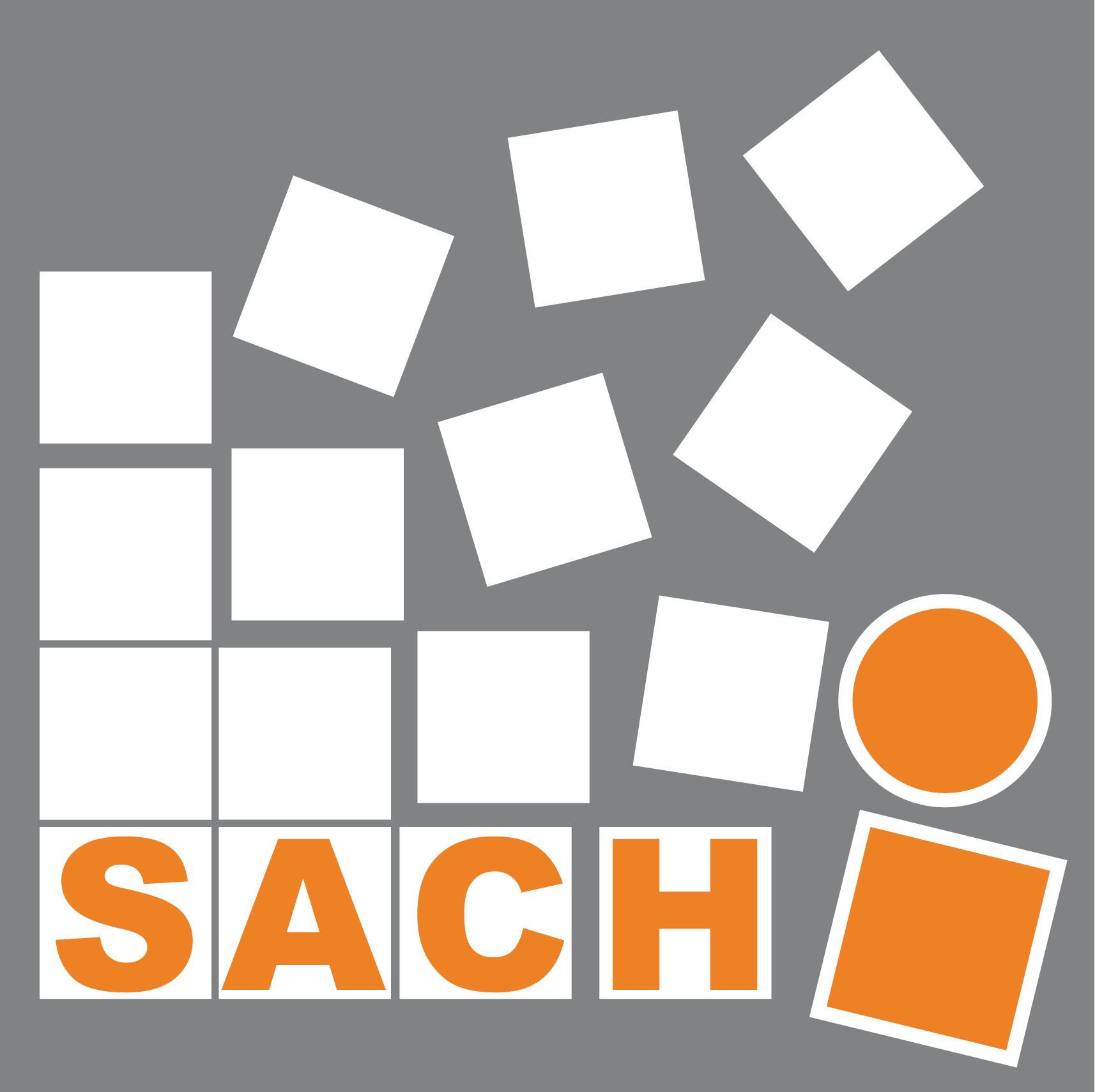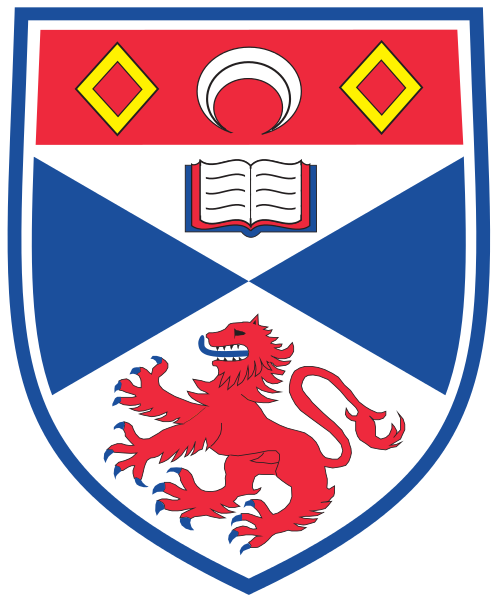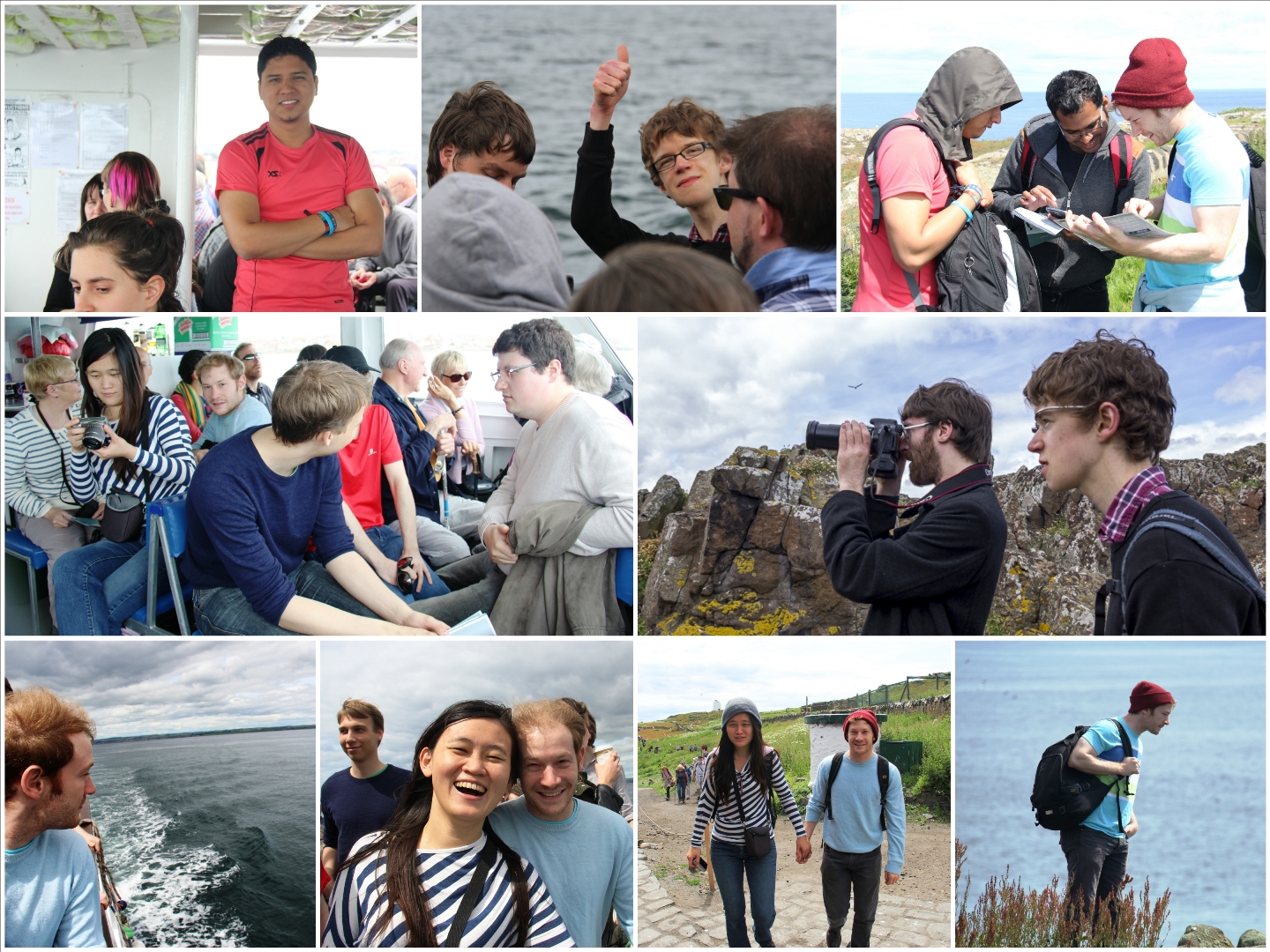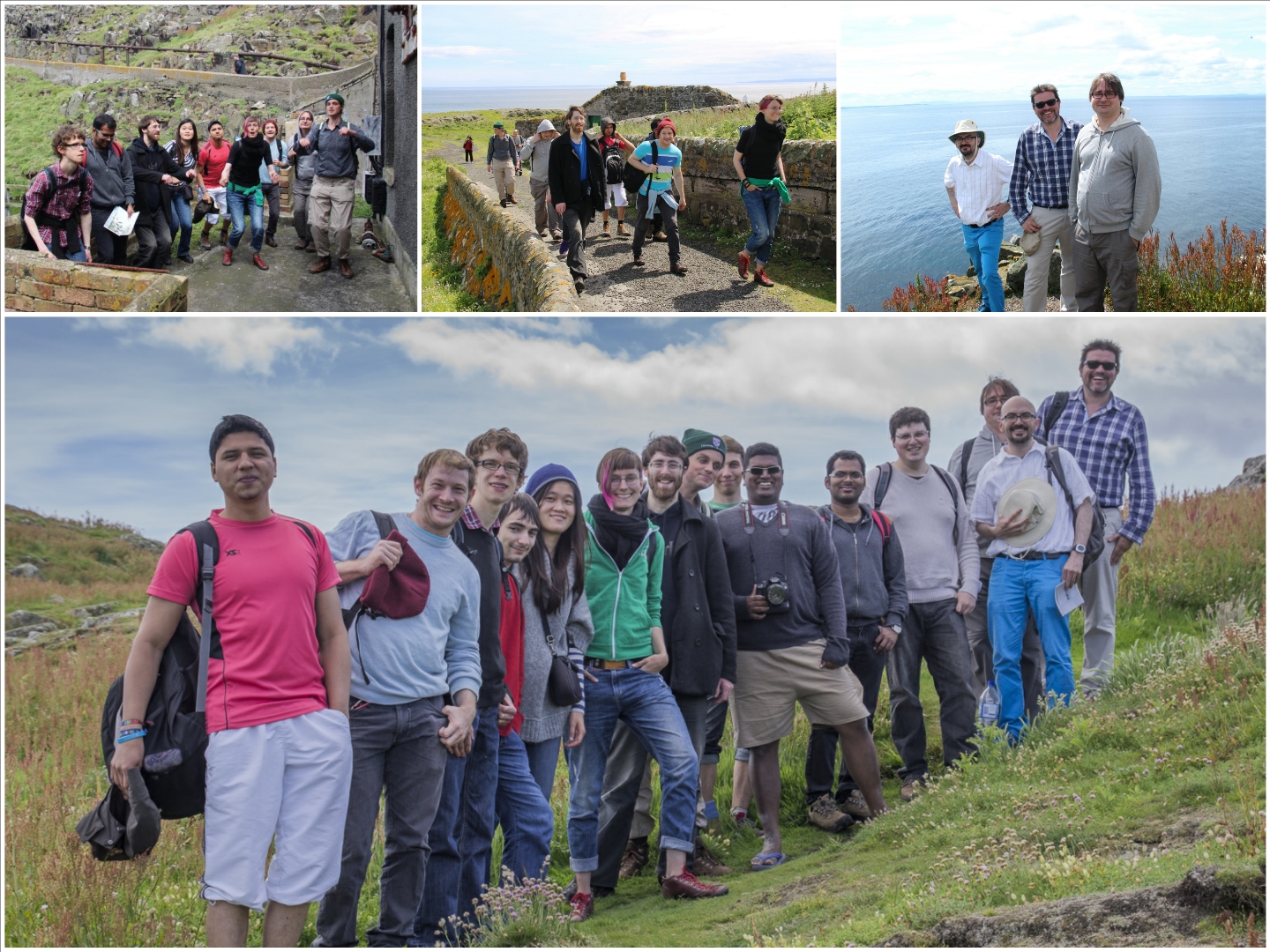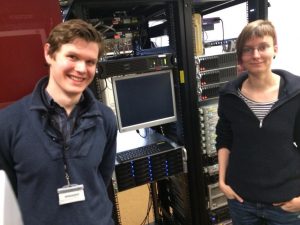On the 19th of June, 2014, the group went out on an excursion to the Isle of May, just off the coast of Anstruther. It was the perfect time to visit, with beautiful weather all day long, and with what we were told to be a quarter of a million birds, as it was the middle of the nesting season. That was actually quite believable, as we saw entire cliff faces covered in birds nested as our ferry, the May Princess, toured round the island: there were puffins, seagulls, ducks, swans, terns – and even a few seals. We enjoyed hiking round the island and photographing the birds for close to three hours. The serene environment gave us a wonderful opportunity to step out of our offices/labs into the bright sunshine and taste the wind and sea – and to embrace the wonders of Mother Nature. As we were getting on and off the boat, we also had quite the “in the wild” experience, when the terns, who were nesting in the mini-harbour area, attacked us in droves, dive-bombing us from overhead to warn us off! We ended the day with an unforgettable meal of Fish and Chips from the famous Anstruther Fish Bar, and with smiles and happy memories! [Photo Credits: Michael Mauderer, Shyam Reyal, Article By: Martin McCaffery]
News
 This year Aaron Quigley was the program chair for PerDis’14 the 3rd ACM International Symposium on Pervasive Displays at the University of Copenhagen in Denmark. This year’s symposium extends the two previous successful symposia PerDis’13 in Google, Mountain View, California, USA and PerDis’12 at the University of Minho in Porto, Portugal.
This year Aaron Quigley was the program chair for PerDis’14 the 3rd ACM International Symposium on Pervasive Displays at the University of Copenhagen in Denmark. This year’s symposium extends the two previous successful symposia PerDis’13 in Google, Mountain View, California, USA and PerDis’12 at the University of Minho in Porto, Portugal.
This year we brought together researchers and practitioners from various disciplines with a common interest in the opportunities and challenges raised by the emergence of pervasive display systems as a new communication medium for public and semi-public spaces. The continued emergence of media facades, pervasive displays as art installations, 3D and in-air display, mobile and display networks gives rise to many new innovations and explorations.
Along with his role as program chair and session chair Aaron presented work on CSCT – Computer Supported Cooperative Teaching authored with Adam Buckland. The overall program included 30 papers, 4 posters, 4 demos and 3 videos which have helped lay the foundation for this emerging research community.
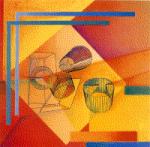
Members of SACHI are presenting a number of papers and other works at this year’s AVI 2014 the International Working Conference on Advanced Visual Interfaces May 27 – 30, 2014 – Como, Italy.
“Started in Rome in 1992, AVI has become a biannual appointment for a wide international community of experts with a broad range of backgrounds. Through more than two decades, the Conference has contributed to the progress of Human-Computer Interaction, offering a forum to present and disseminate new technological results, new paradigms and new visions for interaction and interfaces. AVI 2014 offers a strong scientific program that provides an articulated picture of the most challenging and innovative directions in interface design, technology, and applications. World leading researchers from industry and academia will present their work. 25 different countries are represented in 3 workshops, 32 long papers, 17 short papers, 29 posters, and 14 hands-on demos.”
The schedule below will allow you to see a sample of the Human-Computer Interaction research at the University of St Andrews.
- Wednesday, 14.00 AVI Posters and Demos
“An End-User Interface for Behaviour Change Intervention Development”,
D. Rough and A. Quigley (Univ . of St. Andrews, UK) - Thursday May 29, 2014, 8: 45 – 10.30 Paper Session Room A.2.1 Connection and Collaboration
“Paper vs. Tablets: The Effect of Document Media in Co – located Collaborative Work” [PDF] ( Full Paper)
J . Haber, S . Carpendale (Univ . of Calgary, Canada); M . Nacenta (Univ . of St. Andrews, UK) - Thursday May 29, 2014 11:00 – 12:40 Paper Sessions Room A.3 Evaluation Studies
“An Evaluation of Dasher with a High – Performance Language Model as a Gaze Communication Method” [PDF] (Full Paper)
D. Rough, P.O. Kristensson (Univ . of St. Andrews, UK); Keith Vertanen (Monta na Tech, USA) - Thursday, 15:15 – 16: 30 AVI 2014 Best Papers presented at Villa Erba, Lake Como
“AWToolkit: Attention Aware Interface Widgets” [PDF] (Full Paper)
J. E. Garrido Navarro, V.M. R. Penichet, M. D. Lozano (Univ. de Castilla – La Mancha, Spain); A. Quigley, P. O. Kristensson (Univ . of St. Andrews, UK) (Best Paper)
Finally, on Friday May 30th Aaron will be the session chair for Interface Metaphors + Social Interaction session at 9am.

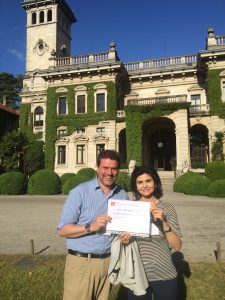
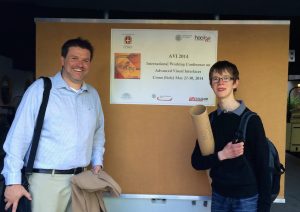
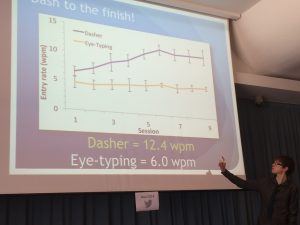

Members of SACHI are presenting a number of papers and other works at this year’s CHI in Toronto, Canada. The schedule below will allow you to see a sample of the Human-Computer Interaction research at University of St Andrews.
Paper (Honourable Mention): Depth Perception with Gaze-contingent Depth of Field
Session: The Third Dimension
When: Monday 11:40-12:00
Where: 718AB
Teaser Video
Interactivity: Text Blaster: A Multi-Player Touchscreen Typing Game
When: Monday 17:30-19:30
Where: Exhibit Hall E
Teaser Video
Paper (Best Paper): RetroDepth: 3D Silhouette Sensing for High-Precision Input On and Above Physical Surfaces
Session: On and Above the Surface
When: Tuesday 11:00-11:20
Where: Exhibit Hall G
Teaser Video
AltCHI Paper: None of a CHInd: Relationship Counselling for HCI and Speech Technology
Session: Limits and Futures
When: Tuesday 11:20-11:40
Where: 717AB
Teaset Video
Paper: Modeling the Perception of User Performance
Session: User Models and Prediction
When: Tusday 14:00-14:20
Where: 801A
Teaser Video
TOCHI Paper: Complementing Text Entry Evaluations with a Composition Task
Session: Text Entry and Evaluation
When: Wednesday 9:40-10:00
Where: Exhibit Hall G
Teaser Video
Paper: Uncertain Text Entry on Mobile Devices
Session: Text Entry and Evaluation
When: Wednesday 10:00-10:20
Where: Exhibit Hall G
Teaser Video
SIG: The Usability of Text Entry Systems Now and in the Future
When: Wednesday 11:00-12:20
Where: 715A
Paper: Quantitative Measurement of Virtual vs. Physical Object Embodiment through Kinesthetic Figural After Effects
Session: Multitouch Interaction
When: Wednesday 14:40-15:00
Where: 718AB
Teaser Video
Aaron Quigley was an associate chair for the Interaction Using Specific Capabilities or Modalities sub-committee and Per Ola Kristensson was an associate chair for the Interaction Techniques and Devices sub-committee. While Aaron Quigley was a session chair, Jakub Dostal and Michael Mauderer were Student Volunteers throughout the conference.

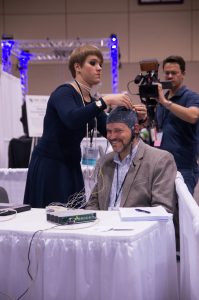
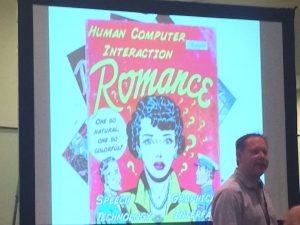
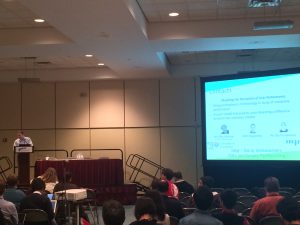

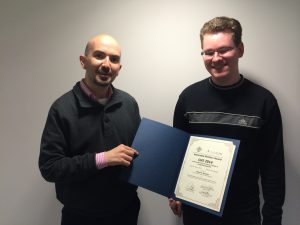
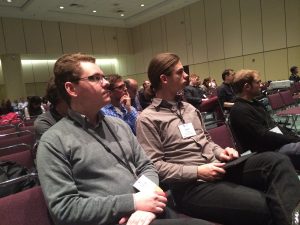
As part of the Man to Machine Health and Technology Series, Professor Aaron Quigley will be giving a talk on “Independent living now and in 2070 – Information and communications technology and ageing” on April the 14th in Seminar Room 1 of the Medical School (location) from 5.15pm – 6.30pm. Further details of the event are here.
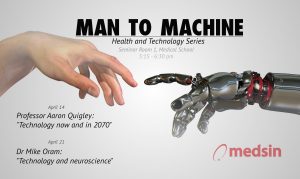

Congratulations to Uta Hinrichs and Aaron Quigley on the launch of their trading consequences project. Trading Consequences charts the commercial growth of the British Empire and it details the economic and environmental impact of shipping valuable commodities such as building materials, tea, fruit and spices. This is the culmination of two years of effort in which eleven million pages of text were processed, resulting in a 150 gigabyte database. People can explore our visualisations, generated from the data, which help to make the historical findings more accessible. Sources included British and Canadian Government documents, newspapers from around the world, books and journals.
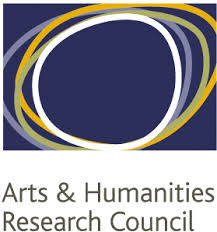 The project has been led by the University of Edinburgh in collaboration with the Universities of St Andrews and Saskatchewan and York University, Canada. The EDINA national data centre at University of Edinburgh has stored information garnered in the study. The two-year project forms part of Digging into Data, a wider initiative by Jisc, the UK’s digital information body. The work is supported by the Arts and Humanities Research Council, Economic and Social Research Council and the Canadian Social Sciences and Humanities Research Council.
The project has been led by the University of Edinburgh in collaboration with the Universities of St Andrews and Saskatchewan and York University, Canada. The EDINA national data centre at University of Edinburgh has stored information garnered in the study. The two-year project forms part of Digging into Data, a wider initiative by Jisc, the UK’s digital information body. The work is supported by the Arts and Humanities Research Council, Economic and Social Research Council and the Canadian Social Sciences and Humanities Research Council.To find out more, please go to: http://tradingconsequences.blogs.edina.ac.uk/
 Later this month, Aaron Quigley has been invited to present at two conferences on digital tourism. The first is the signature conference of the Scottish Tourism Week in Edinburgh on the 12th of Mar 2014. And the second is a conference on Meeting the needs of the modern visitor, hosted by Interface – The knowledge connection on the 25th of Mar 2014 (see newspaper item).
Later this month, Aaron Quigley has been invited to present at two conferences on digital tourism. The first is the signature conference of the Scottish Tourism Week in Edinburgh on the 12th of Mar 2014. And the second is a conference on Meeting the needs of the modern visitor, hosted by Interface – The knowledge connection on the 25th of Mar 2014 (see newspaper item).
Each talk will address the question of how to support the interaction between a visitor before, during and after their tourist experience. Some aspects are simply pointers to what we currently have with services and application in desktop or mobile computing. Some parts touch on what is possible with data science and data analytics. An finally, what the future might hold with new forms of human computer interaction which take us away from eyes down mobile interaction with “apps” and instead refocuses us on the world around us.
During these talks Aaron will discuss SMART, LADDIE and Palimpsest (website | announcement), projects funded under the SFC Horizon (Smart Tourism) and AHRC: Big Data calls.
You can see a video from a similar talk Aaron gave in 2013 with Interface below.
In May of 2014 Aaron Quigley of SACHI, Victor M. R. Penichet of the Interactive Systems Everywhere research group (ISE), University of Castilla-La Mancha, Spain and Harald Reiterer of the HCI Lab in the University of Konstanz, Germany are organising AVID’14 an AVI 2014 workshop on roadmapping advanced visual interface display ecosystems. Victor and Harald were both visitors to SACHI in 2013 and each has a long track record in display ecosystem research and in leading workshops, symposia, Dagsthul seminars, grants and other activities in the field.
The website for the workshop is: http://avid2014.iseresearch.com/ and position papers are due in one month, on March 12th, 2014.
 At the end of February, Jakub Dostal and Per Ola Kristensson will be attending IUI 2014 in Haifa, Israel.
At the end of February, Jakub Dostal and Per Ola Kristensson will be attending IUI 2014 in Haifa, Israel.
Jakub will be presenting the full paper SpiderEyes: Designing Attention and Proximity-Aware Collaborative Interfaces for Wall-Sized Displays by Jakub Dostal, Uta Hinrichs, Per Ola Kristensson and Aaron Quigley. This paper introduces the concept of collaborative proxemics: enabling groups of people to col- laboratively use attention- and proximity-aware applications. To help designers create such applications we have developed SpiderEyes: a system and toolkit for designing attention- and proximity-aware collaborative interfaces for wall-sized displays. SpiderEyes is based on low-cost technology and allows accurate markerless attention-aware tracking of multiple people interacting in front of a display in real-time. The paper discusses how this toolkit can be applied to design attention- and proximity-aware collaborative scenarios around large wall-sized displays, and how the information visualisation pipeline can be extended to incorporate proxemic interactions.
You will soon be able to read more about this work on its on designated project page: SpiderEyes.
Jakub is also a Student Volunteer for the conference. Per Ola is a member of the Senior Programme Committee for IUI 2014.
Building on the success of the 2012 and 2013 events, the 3rd International Symposium on Pervasive Displays (PerDis’14) will be held this June with Aaron Quigley as the program chair. The website is at: http://pervasivedisplays.org/2014/
This symposium will take place in Copenhagen in June 2014 and will include a keynote address. In addition to research papers we are also soliciting submissions for posters and demonstrations.
As digital displays become pervasive, they become increasingly prevalent and indeed relevant in many areas, including advertising, art, computing, engineering, entertainment, interaction design, sociology and urban life. We invite submissions that report on cutting-edge research in the broad spectrum of pervasive digital displays, from large interactive walls to wearable displays, from installations to personalised signage or mobile displays to urban visualisation. The symposium on Pervasive Displays welcomes work on all areas pertaining to digital displays including, but not limited to:
- Applications
- Content design
- Evaluations, case studies, deployments and experience reports
- Interfaces and interaction techniques
- Novel technologies and new forms of pervasive display
- System architectures and infrastructure
